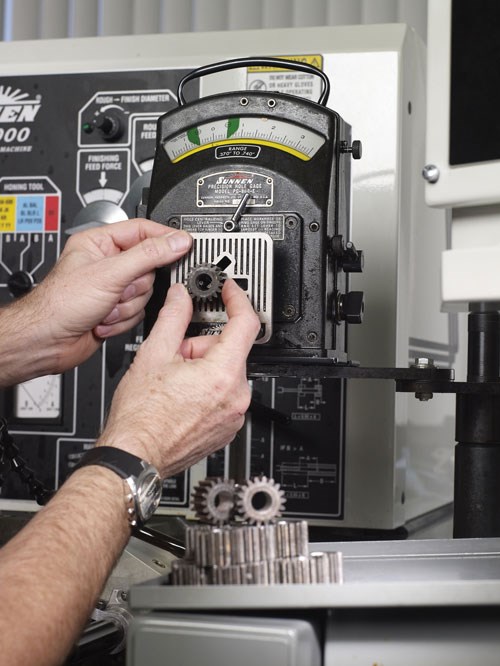Electronic Dial Bore Gage
It’s another one of those “necessary evils” that shopfloor employees often don’t appreciate the significance of.
It’s another one of those “necessary evils” that shopfloor employees often don’t appreciate the significance of. The so-called non-value-added operations often seem to be a hassle, but when they add to the quality of the product, who really can deny the value?
While gaging is an additional step in the production process, it is important in ensuring that a shop is meeting its required tolerances. It plays a significant role in determining the accuracy of a bored hole, and it can also help to predict remaining tool life through variations in tightness of the gage in the part. But the effectiveness of the gage is directly related to the operator’s ability to accurately read its display.
Featured Content
Sunnen Products now offers optional, large-readout electronic indicators on its entire range of dial bore gages. Highly visible in the shop environment and a quick reference for multitasking operators, the electronic dial bore gages feature precision indicators with 6-digit LCD readouts, 11-mm character height and three large buttons for easy operation. Capable of checking bore sizes from 0.054 inch (1.37 mm) to 12 inches (300 mm) and bore lengths as long as 24 inches (600 mm), the electronic bore gages allow users to set upper and lower tolerance limits for go/no-go judgments, which are then displayed in full-size characters. Standard analog indicator-equipped gages read out in tenths (0.002 mm); models with five-tenths (0.010 mm) readouts are also available. Operators can easily toggle between inch- and metric-measurement readouts. The gage is available in 34 different standard diameter/length ranges, as well as optional lengths.
The electronic indicator dial bore gages, accurate to ±0.00012 inch (±0.003 mm) with 0.00005 inch (0.001 mm) resolution, provide the ability to perform scaling calculations, judge tolerance, hold data and perform general comparison measurements. Internal calculations using a simple [F(x)=Ax)] formula are also possible. Using the formula requires mounting the indicator on a measuring jig, and setting the calculation factor (to any value) allows direct measurement without using a conversion table and improves measurement efficiency. This means that the indicator can be programmed with a conversion, and the bore ID is displayed rather than the amount the bore varies from perfect (zero on the display).
The company says the gages are ideal for shops honing production runs of parts that require SPC data at multiple points in the bore. Data output via an SPC cable enables direct transfer of bore measurements to a computer for use with SPC software. Optional wireless data export to a computer is also available. A transmitter is connected to the gage, and the receiver is connected to the computer. The transmission range is approximately 60 feet.
The indicator face displays the spindle’s actual position via an absolute linear encoder capable of relocating the origin, even after the power is turned off, for quick-start, multi-point measurement. The positive/negative count resulting from the spindle’s up-and-down movement can be toggled, and the indicator face can be rotated 330 degrees so it can be read at virtually any angle.
Gage centralizers are adjustable to ensure proper centralization over the entire diameter range, resulting in accurate centering action, even if the gage is tilted off the bore axis. A right angle attachment is available for conditions where the gage is difficult to read or total gage height is an issue. Blind hole probes and probe extensions are also available. Probe extensions are 2.5 inches (63.5 mm) long, and as many as three extensions can be assembled together.
Most models feature all-carbide gaging points for applications where exposure to extreme wear conditions, such as heavy production, rough workpieces or abrasive materials, is a factor. All dial bore gages are designed for the machining environment with a dust/water protection level of IP42 or IP53. Battery life, under normal use, is approximately 5,000 hours.
When bore quality assurance is required, it makes sense to use gages that make the job easier and repeatable.
RELATED CONTENT
-
How to Choose and Use Styli
The variety of probe applications on machine tools, CMMs, comparative gages and portable arms makes correct selection of styli usage essential for efficient, reliable and accurate measurement. Here are some key points that can be helpful in choosing the best measurement solution.
-
Keeping Watch on Small Parts
From watch parts to exotic medical applications, this shop takes on the world of micromachining.
-
Determine Passivation of Stainless
Properly cleaned stainless steel is naturally protected from corrosion by a thin, passive film. But this passive layer can be removed or scratched. A passivation meter measures the surface potential under controlled conditions.








